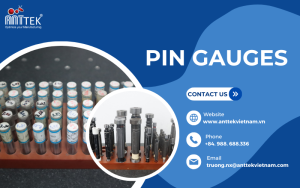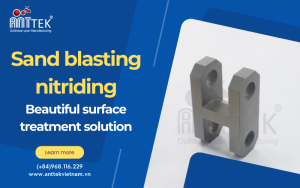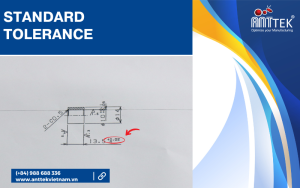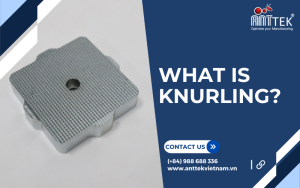Thread tilt in precision mechanical processing
Thread tilt in precision mechanical processing refers to a deviation or misalignment in the orientation of a threaded feature from its intended position or axis. This type of error can have a significant impact on the functionality and quality of threaded components, particularly in applications where precision is critical. Addressing thread tilt errors is essential in maintaining the integrity and performance of threaded connections. Here’s an overview of how thread tilt errors are identified and managed in quality control (QC) processes for precision mechanical processing
Causes of Thread Tilt
Machine Setup Issues
- Misalignment: Inaccurate alignment of the workpiece in the machine can lead to thread tilt. Proper alignment is crucial to ensure that the threaded feature is machined along the intended axis.
- Tool Center Offset: Incorrect tool center offset settings may result in the tool deviating from the desired path, causing thread tilt during machining.
Tool Wear and Condition
- Dull Cutting Tools: As cutting tools wear over time, they may lose their sharpness and precision. Dull tools can lead to inaccuracies in the machining process, including thread tilt.
- Tool Deflection: Excessive wear or damage to the cutting tool can cause it to deflect during machining, deviating from the intended path and resulting in thread tilt.
Material Properties
- Inconsistent Material Hardness: Variations in material hardness can affect the machinability of the workpiece. Inconsistent hardness across the material may lead to uneven material removal, causing thread tilt.
- Material Deformation: Some materials may be prone to deformation or warping during machining, especially if improper cutting speeds or feeds are used.
Operator Factors
- Lack of Training: Inadequate training of machine operators can result in errors, including misjudgment of machining parameters or improper handling of the machining equipment.
- Inattention to Detail: Even experienced operators may occasionally overlook critical details, such as tool wear or machine calibration issues, which can contribute to thread tilt.
Tool Path Programming
- Incorrect Tool Path Programming: Errors in the CNC (Computer Numerical Control) programming of the tool path can result in deviations from the intended machining trajectory, causing thread tilt.
- Programming Updates: Failure to update or verify CNC programs regularly may lead to discrepancies between the programmed path and the actual machining process.
Coolant and Lubrication
- Inadequate Cooling: Insufficient coolant flow or improper lubrication can lead to elevated temperatures during machining. This can affect the material properties and cause thermal expansion, potentially contributing to thread tilt.
Workpiece Fixturing
- Insecure Fixturing: If the workpiece is not securely held in place during machining, it may experience movement or vibration, leading to inaccuracies and thread tilt.
- Improper Clamping: Incorrect clamping of the workpiece can result in uneven pressure distribution, affecting the stability of the machining process.
Corrective Actions
Adjustments in Setup
- Check Machine Alignment: Ensure that the machining equipment is properly aligned. This includes checking the alignment of the workpiece, tooling, and other machine components.
- Re-Calibrate Axes: If misalignment is identified, re-calibrate the machine axes to ensure that the machining process follows the intended path.
Tool Maintenance
- Regular Tool Inspection: Implement a schedule for regular inspection of cutting tools. Replace dull or damaged tools promptly to maintain precision.
- Tool Replacement: Establish clear criteria for tool replacement based on wear patterns, and replace tools proactively to prevent deviations in the machining process.
Operator Training and Supervision
- Enhance Operator Skills: Provide additional training to machine operators, focusing on proper setup, tool handling, and recognizing signs of tool wear or misalignment.
- Supervision and Monitoring: Introduce supervision protocols to ensure that operators follow established procedures and promptly address any deviations during the machining process.
Material Properties
- Material Testing: Conduct thorough testing of material properties, especially hardness, to identify variations that may impact the machining process.
- Material Selection: Consider using materials with consistent properties for critical components, and work closely with material suppliers to ensure quality.
Tool Path Programming
- Program Verification: Regularly verify CNC programs to ensure they accurately represent the intended tool paths.
- Update Programs: Update CNC programs as needed to reflect any design changes or improvements in machining strategies.
Coolant and Lubrication
- Optimize Coolant Flow: Ensure that the coolant flow is sufficient to maintain proper temperatures during machining.
- Lubrication Checks: Verify that lubrication systems are functioning correctly to reduce friction and heat generation.
Workpiece Fixturing
- Secure Fixturing: Confirm that the workpiece is securely fixed in place during machining to prevent movement or vibration.
- Clamping Optimization: Review and optimize clamping methods to evenly distribute pressure across the workpiece.
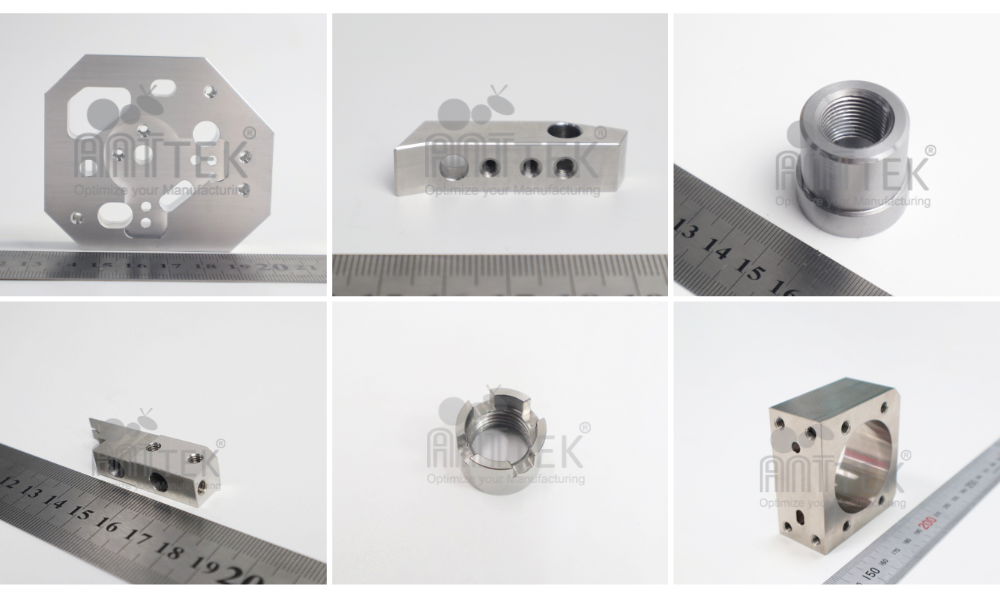
Other types of thread errors in precision mechanical processing
Shallow thread error
Shallow thread error refers to a condition where the depth of the threads in a threaded feature is less than the specified or intended depth. This error can occur during the machining process and may have various causes. Addressing shallow thread errors is crucial in precision mechanical processing to ensure the proper functionality and load-bearing capacity of threaded connections.
The error of not threading
The error of not threading, or failing to create the intended threads during mechanical machining, can occur for various reasons and can adversely affect the functionality and integrity of the final product. Identifying and addressing the root causes of this error is crucial for ensuring that threaded components meet design specifications.
Thread Angle Errors
Thread angle errors involve discrepancies in the angle of the thread flanks. These errors can lead to improper thread engagement and affect the overall strength of the threaded connection.
Rough thread surface
The condition of the thread surface is uneven or has an undesirable texture. This problem can affect the functionality, durability, and overall quality of the threaded connection. Some factors can make the thread surface rough such as cutting edges, lathes with chips, insufficient coolant and lubricants, and increasing friction and heat, affecting thread quality.
Incorrect thread pitch diameter
Inaccurate thread pitch diameters can lead to a range of problems, including poor thread engagement, reduced fastener strength, and challenges in achieving proper fit to assembled parts.
To minimize these thread errors in precision machining, it is important to maintain a high level of machine accuracy, use quality tooling, conduct regular maintenance, and closely monitor the machining parameters. Additionally, implementing thorough quality control and inspection measures can help identify and resolve thread defects before the final product is completed.


